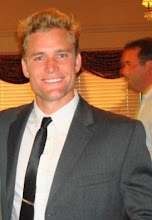"If you meet the Buddha in the lane, feed him the ball." - Phil Jackson
Check out this sick video on bounding. Bounding is the culmination of all your sprint training, the ability to move with maximum full-body impact with consistent pace & form. If a 180lb male can generate 370lbs of force with each footstrike during a sprint, think of how much force is generated through bounding and how that translates over to fast-twitch muscle development. (Hint: Kobe generates around 1200lbs of force when he jumps off 1 foot for a dunk. Yeah, 1200lbs. That's not a typo.)
http://www.youtube.com/watch?v=7yZ3kp_IMk0
The full article
http://conditioningresearch.blogspot.com/2008/05/bounding.html
A great article on box squats. Box squats are absolutely the best tool for learning to overhead squat and 1-leg (pistol) squat correctly.
http://stronglifts.com/build-explosive-strength-how-to-perform-box-squats/
Speaking of squats, here's how to front squat properly. If I'm not overhead squatting it's my primary form of squat as it requires much more core control & stabilization than a traditional backsquat. Plus I can transition into a push-press, hang-clean, etc at any time. Try 1 set regular and 1 set front squat and see if you notice the functional difference.
http://stronglifts.com/how-to-front-squat-with-proper-technique/
A good article on anterior core training
http://www.t-nation.com/article/performance_training/anterior_core_training
and a couple videos for examples of isometric exercises and some other types. Good stuff to incorporate into your field workouts.
http://www.youtube.com/watch?v=gDSQjvTMN_A
http://www.youtube.com/watch?v=NXD69lc1OTY
Workout:
I've gotten a good number of questions regarding my workouts and it's important to note that what I post are just my weightroom sessions, which make up only 25% of my training program. (sorry, can't give away all my secrets) I follow Jim Radcliffe's program, the strength coach at U of Oregon, and the father of plyometrics. I had the extremely fortunate opportunity to train with him in high school and he's forever left a distinct impact on my athletic career. My program follows as such:

This week I spent a lot of time analyzing the sportlab videos and concepts and figuring out how to incorporate it into my training, which exercises were pertinent, and how I could re-create some of the movements at my gym as they pretty much use what looks like a glorified calf-raise machine. It's important to realize that when it comes to exercise science new ideas don't necessarily negate old ones, but rather build upon them. I don't have all the answers to the questions (yet), but it sure is fun exploring these new movements and how they translate over to the field.
Movement Prep: Circuit consisting of:
Jump-rope (1 min)
Handstand pushups against wall (TF)
bodyweight squats (12)
Jump-rope (1 min)
Handstand pushups (TF)
Walking split-squats w/core twist forewards, then backwards no twist (8 each direction)
Jump-rope (1 min)
inchworms (10)
Side-lunges (8 each direction)
Jump-rope (1 min)
step-ups (8 each leg)
bodyweight squats (12)
Med-Ball
25 front-squat vertical tosses
25 Overhead slams
25 side-twist throws (in backhand position) each side
10 1-arm front-squat vertical tosses each arm(keep ball next to chest like shotput position, then explode upwards)
I mixed in mini-band shuffles between the different throws as well, switching between wearing the bands on both the ankles and just above the knee.
Plyo Skills & Drills
Each sequence performed 2x's resting only when necessary
1A: Box March with mini-band at knees http://www.exrx.net/Plyometrics/BoxMarchHigh.html
1B: plyo-pushups
2A: Split-squat jumps (not a lunge jump. There's just no lunging involved)
http://www.youtube.com/watch?v=_zLTDUFjbXA
2B: jumping pull-ups w/tuck
3A: Lateral shuffles w/mini bands and holding medicine ball overhead
http://www.exrx.net/Plyometrics/BoxLateralShuffle.html
3B: Ab wheel (To failure)
4A: Box jumps w/1 foot landings
4B: jumping pull-ups w/tuck
Functional Exercises:
For this portion I performed a number of the arm swivels/circles on top of the swiss medicine ball that I saw from the sportslab videos as well as a bunch of balancing stability exercises such as bulgarian split-squats with back leg on the swiss ball, glute bridges, etc. I really just explored new movements and what their respective areas of focus were. I finished with a cable machine that has a foot attachment and did a number of different hip swivels and leg extensions focusing on minimal but explosive ground contact time and moving with hip mobility & stability. Great stuff and I could really feel it in the pelvic girdle muscles.
Core Circuit:
-GHD swandives (from sports lab video w/weights in each hand
- Standing core twists
- Side plank
- GHD situps
3x's through resting only when necessary.
This week:
Monday: Yoga/recovery
Tuesday: field work w/lateral agility emphasis
Wednesday: Workout above- plyometric/explosive emphasis
Thursday: Short but intense (always train as close to game speed as possible) sprint workout consisting of short-yardage sprints & speed transition work, followed by 4 rounds of heavybag work, punches & kicks. Kicks= the shit for making your legs strong.
Friday: Recovery
Saturday/Sunday: Cal States
#40
